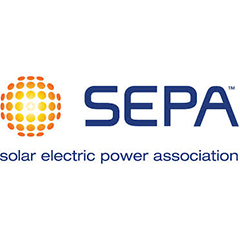Prices cluster around $3-$4 per watt for residential, $2-$3 for nonresidential and utility-scale
Media contact: K Kaufmann, kkaufmann@solarelectricpower.org
WASHINGTON, DC — A new state-level analysis of close to 11,000 solar price quotes has found that, despite some outliers, average residential solar prices in 2014-2015 clustered around $3-$4 per watt, while prices for nonresidential and utility-scale projects came in lower at $2-$3 per watt.
The report from the Solar Electric Power Association (SEPA) is part of a new initiative to dig into regional pricing trends for photovoltaic (PV) solar at more detailed levels than have previously been available to market stakeholders. The data for the study were provided by two online platforms, EnergySage and Mercatus, and include price quotes for residential, commercial and utility-scale projects collected in 25 states, the District of Columbia and Puerto Rico from January 2014 to July 2015.
“We filtered the data we received through a range of variables, from the effect of state incentives and competitive price visibility to average electricity prices, and transportation and labor costs,” said Erika Myers, SEPA’s Senior Manager of Research and lead author of the report. “But no one factor explains the price quote variations we are seeing both within and across regions.”
Key findings of the report include:
· While prices in the residential solar market clustered around $3-$4 per watt, the study found variation between regions and states, in some cases, possibly due to consumers not having a full view of competitive pricing information. For example, limited price visibility among consumers and between vendors has pushed average solar prices in New York and Massachusetts to $4.03 per watt and $4.20 per watt respectively.
· Many factors were tested for their impact on prices. A strong correlation was found between incentives and total system costs, indicating that customers receiving incentives could go with larger systems. But the study found no definitive link between incentives and price quotes per watt. The outlier here is Washington state, where generous rebates for purchasing panels manufactured in-state were associated with higher prices, averaging $4.43 per watt.
· Nearly all of the prices in the commercial sector were within the range of $2-$3 per watt. Nonresidential prices also reflected smaller variations compared to residential price quotes – possibly the result of the greater experience and procurement sophistication of large commercial consumers.
Myers emphasized that these and other findings in the report are considered tentative. Recognizing the limited scope of the data for this initial effort, SEPA plans to continue gathering state-level price quotes and has issued a request for other organizations to provide their information.
“With SEPA’s newly expanded mission, encompassing large-scale solar as well as demand response and other distributed energy technologies, we are also expanding our research to provide more detailed and comprehensive market insights,” said Tanuj Deora, Executive Vice President and Chief Strategy Officer. “This information will be critical as the transformation of the U.S. energy market unfolds state by state – at different speeds and with different policies – across the country.”
A copy of the Executive Summary of “Photovoltaic System Price Quotes from Selected States, 2014-2015” is attached, along with supplemental quotes from EnergySage and Mercatus.
For a full copy of the report, contact K Kaufmann, kkaufmann@solarelectricpower.org/
A webinar on the report is scheduled for Feb. 11, 2016. Again, contact K Kaufmann to register.
About SEPA: The Solar Electric Power Association (SEPA) is an educational nonprofit that enables the transition to a clean energy economy by facilitating utility integration and deployment of solar, demand response, and other distributed energy resources and supporting technologies onto the grid.


























